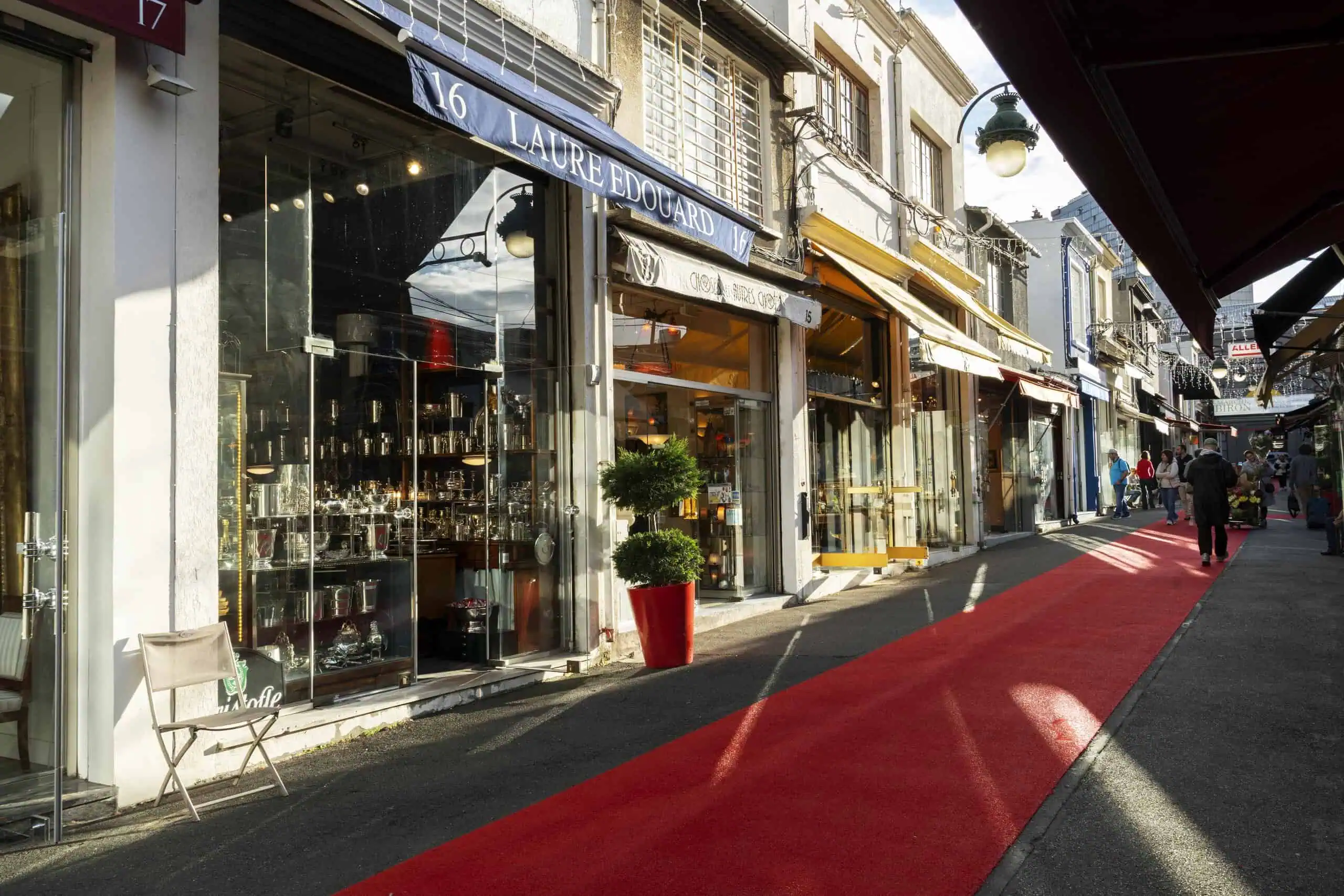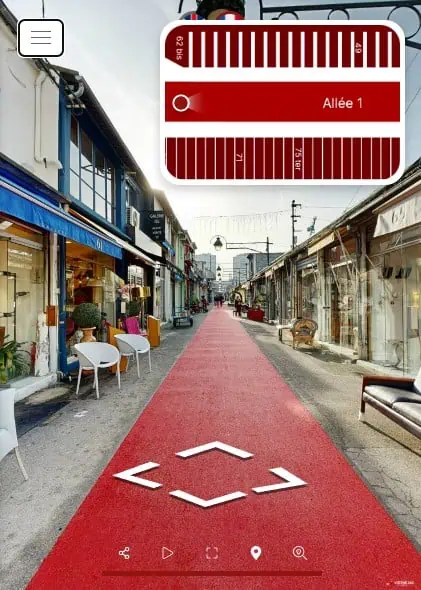Bateau de pêche dans les brisants signé Johann-Jakob Ulrich (1798-1877) huile sur toile vers 1837
Au sommet de son Art, inspiré par sa rencontre avec Théodore Gudin, Johann-Jakob Ulrich peint un magnifique et poignant tableau. Il y décrit la difficulté et la dangerosité des pêcheurs dans la région de Dieppe.
Très belle composition, utilisation magique de la lumière, sujet poignant, tout est présent dans ce beau tableau qui nous raconte la réalité de ce dangereux métier que vivent les pêcheurs dans ce premier tiers du XIXème siècle dans la région de Dieppe.
Signé en bas à droite par Johann-Jakob Ulrich et daté 1837.
Dimension sans cadre : Hauteur 63 cm – Longueur 78 cm.
Dimension avec cadre : Hauteur 80 cm – Longueur 95 cm.
En très bon état de conservation, sur sa toile d’origine, cadre moderne.
Biographie :
Johann Jakob Ulrich (28 février 1798 – 17 mars 1877) était un peintre et graphiste suisse. Il est principalement connu pour ses paysages, bien qu’il ait réalisé quelques peintures de figures et natures mortes.
Il est né à Andelfingen. Son père, Johann Jakob Ulrich-Meyer (1769-1840), était un commis cantonal qui devint plus tard éditeur. En raison de la situation dangereuse dans la région frontalière avec la France, il est envoyé chez ses grands-parents à Weisslingen. Plus tard, il a fréquenté les écoles de Winterthur et de Zürich. Sur les conseils de son père, il suit d’abord une formation de commerçant, bien qu’il ait déjà manifesté un vif intérêt pour l’art et qu’il copie des tableaux. En 1816, après la fin des troubles en France, il entre dans la banque Paturle, Lepin & Cie à Paris.
Il reste à la banque jusqu’en 1823 mais, en 1822, ne pouvant plus ignorer ses véritables désirs, il commence à fréquenter les ateliers de Jean-Victor Bertin, aux côtés de Camille Corot. Il étudie également avec Xavier Leprince et ses frères. Plus tard, il travaille avec Théodore Gudin à Dieppe et, en 1825, il ouvre son propre atelier à Paris. A partir de 1824, il expose régulièrement au Salon des Artistes Français.
Entre 1828 et 1830, avec le soutien du célèbre réformateur pénal Frédéric-Auguste Demetz, qui est également un collectionneur d’art passionné, il voyage à travers l’Italie et se rend à plusieurs reprises en Angleterre entre 1832 et 1835, où il est influencé par les œuvres de John Constable. À la fin des années 1830, il s’installe à Zurich, bien qu’il continue à voyager beaucoup. Pendant un certain temps, il partage un atelier avec son ami, le peintre animalier Jacques Raymond Brascassat. En 1837, il épouse Dorothea Susanne von Schwerzenbach, issue d’une vieille famille zurichoise.
Au milieu des années 1840, il prend des élèves, notamment Rudolf Koller. Plus tard, il commence à répondre aux goûts populaires en matière de sujets, mais conserve son style personnel, exprimé par des effets de lumière. En 1855, il devient professeur de peinture de paysage à l’Eidgenössische Polytechnikum. L’année suivante, sa femme meurt et il épouse sa sœur, Bertha. Commence alors une période de voyages presque ininterrompus qui, combinée à des problèmes de vue, entraîne une baisse de la qualité de son travail. Après la mort de Bertha en 1874, il se retire de la vie publique. Il meurt en 1877 à Zürich.
Réferences :
Schweizer Zeichnungen 1800-1850 aus dem Basler Kupferstichkabinett. Kunstmuseum Basel, 1991. (Exhibition catalog).
Sabine Schulze (Ed.): Gärten: Ordnung – Inspiration – Glück, Städel Museum, Frankfurt am Main & Hatje Cantz Verlag, Ostfildern 2006.
Fishing Boat in the Breakwater signed by Johann-Jakob Ulrich (1798-1877) oil on canvas circa 1837.
At the summit of his art, inspired by his meeting with Theodore Gudin, Johann-Jakob Ulrich painted a magnificent and poignant painting. He describes the difficulty and danger of the fishermen in the Dieppe region.
Very beautiful composition, with a magical use of light, and a poignant subject, everything is present in this beautiful painting that tells us the reality of this dangerous profession that fishermen lived in the first third of the 19th century in the Dieppe region.
Sizes unframed: H 24.80 In. – W 30.70 In.
Sizes framed: H 31.49 In. – W 37.40 In.
Signed on the lower right by Johann-Jakob Ulrich and dated 1837.
In fine condition.
Biography:
Johann Jakob Ulrich (28 February 1798 – 17 March 1877) was a Swiss painter and graphic artist. He is primarily known for landscapes, although he did some figure paintings and still lives.
He was born in Andelfingen. His father, Johann Jakob Ulrich-Meyer (1769–1840), was a Cantonal clerk who later became a publisher. Due to the dangerous situation in the border region with France, he was sent to live with his grandparents in Weisslingen. Later, he attended schools in Winterthur and Zürich. Upon his father’s advice, he initially trained to be a merchant, although he had already expressed a strong interest in art and was copying paintings. In 1816, after the troubles in France had concluded, he began working at the banking firm Paturle, Lepin & Cie in Paris.
He remained at the bank until 1823 but, in 1822, unable to ignore his true desires any longer, he started to frequent the studios of Jean-Victor Bertin, alongside Camille Corot. He also studied with Xavier Leprince and his brothers. Later he worked with Théodore Gudin in Dieppe and, in 1825, opened his own studio in Paris. From 1824, he was a regular exhibitor at the Salon des Artistes Français.
Between 1828 and 1830, with the support of the well-known penal reformer, Frédéric-Auguste Demetz who was also an avid art collector, he traveled throughout Italy and visited England several times from 1832 to 1835, where he was influenced by the works of John Constable. In the late 1830s, he settled in Zürich, although he continued to travel extensively. For a time, he shared a studio with his friend, the animal painter, Jacques Raymond Brascassat. In 1837, he married Dorothea Susanne von Schwerzenbach, from an old Zürich family.
By the mid-1840s, he was taking students, notably Rudolf Koller. Later, he began catering to popular tastes in subject matter but retained his personal style, expressed by lighting effects. He became a professor of landscape painting at the Eidgenössische Polytechnikum in 1855. The following year his wife died and he married her sister, Bertha. This began a period of almost nonstop traveling and, combined with eyesight problems, occasioned a decline in the quality of his work. After Bertha died in 1874, he retired from public life. He died in 1877 in Zürich.
References:`
Schweizer Zeichnungen 1800-1850 aus dem Basler Kupferstichkabinett. Kunstmuseum Basel, 1991. (Exhibition catalog)
Sabine Schulze (Ed.): Gärten: Ordnung – Inspiration – Glück, Städel Museum, Frankfurt am Main & Hatje Cantz Verlag, Ostfildern 2006






































